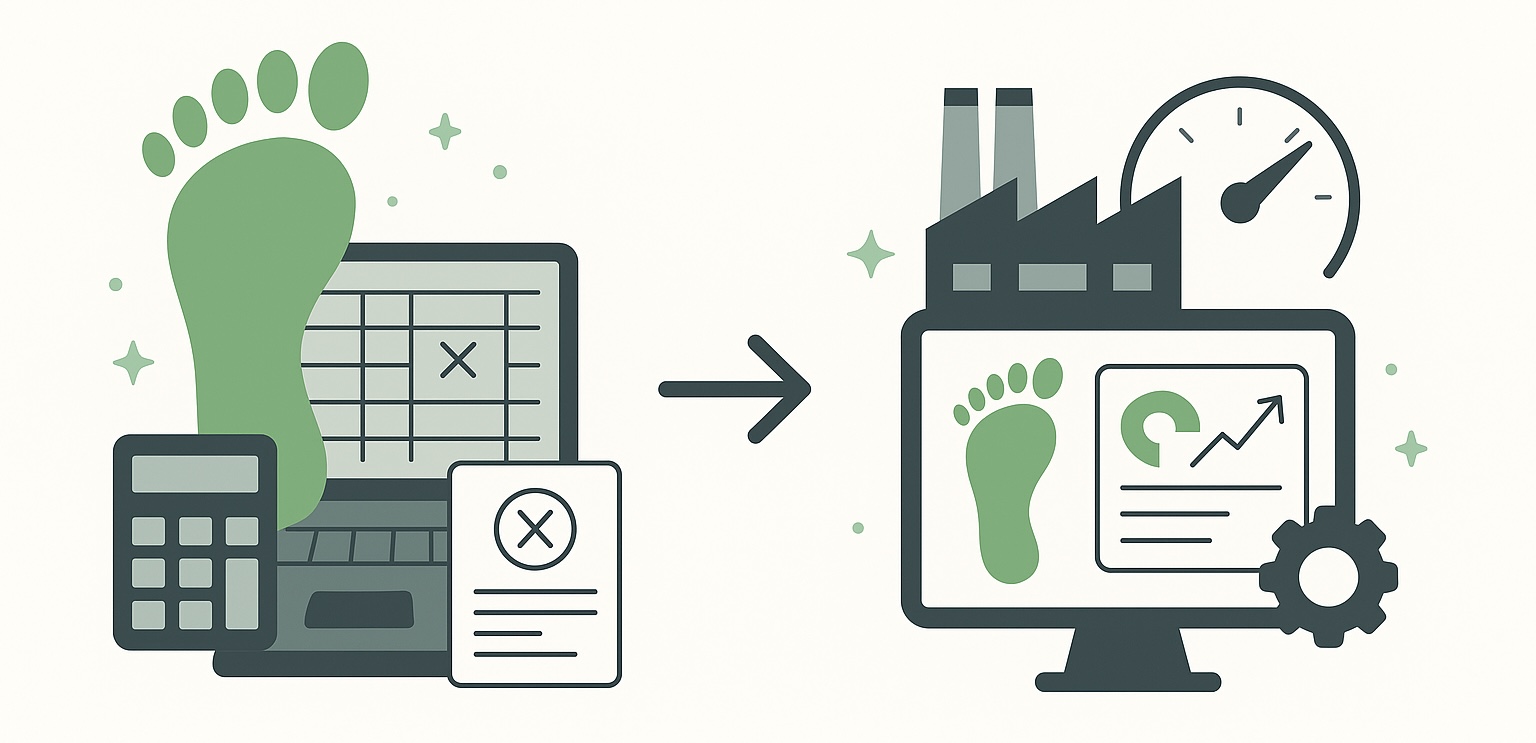
Many companies believe they’ve accurately measured their carbon footprint, but the data often tells another story.That’s because most emissions reports still rely on outdated spreadsheets, default emission factors, and manual data entry. These traditional methods often miss key contributors, especially when it comes to indirect (Scope 3) emissions like raw materials, logistics, or energy usage from suppliers. These would lead to an incomplete picture of your environmental impact.
Stop Predicting: Where Manual Reporting Falls Short
Without accurate, real-time inputs, companies are left guessing. Emission factors are often averaged across entire industries, ignoring actual fuel types, distances, or production processes. And with data scattered across departments, or even buried in supplier emails, errors become unavoidable.
Smart Integration Is the Fix, Not More Spreadsheets
Instead of layering on more spreadsheets, our products now provide an integrated, automation-ready system tailored for enterprise carbon accounting. By linking with internal systems like ERP, energy meters, or logistics platforms, these solutions collect real-time operational data—from electricity use to shipping routes—then calculate emissions using up-to-date, regionally appropriate factors.
Built-in dashboards highlight key metrics, flag anomalies, and help teams identify which business activities are driving emissions the most. For companies operating across multiple facilities or regions, the system ensures consistency and compliance through standardization and automatic updates to factor libraries.
From Error-Prone to Audit-Ready
Automation does more than improve accuracy—it saves time, reduces compliance risk, and builds confidence among regulators, investors, and clients. With a transparent data trail and traceable logic, what used to be an administrative headache becomes a strategic advantage. Sustainability reporting stops being guesswork and starts driving decisions.